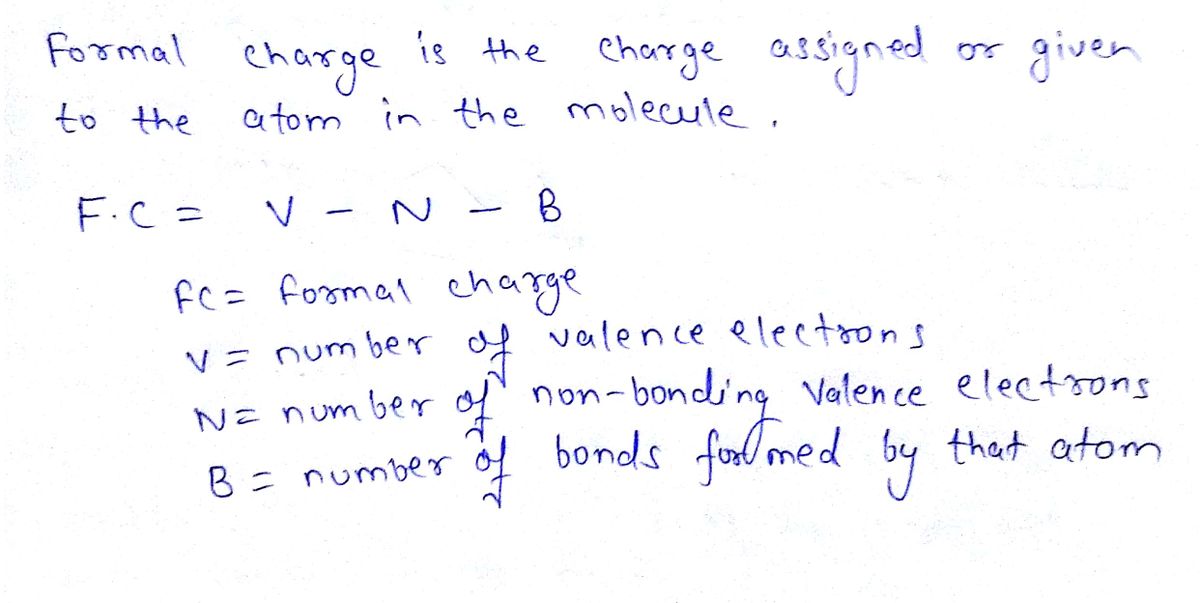5) Calculate the formal charges in both of the Lewis structures depicted below and explain why the left structure is how sulfate is typically represented, even though it violates the octet rule. :0: :ö: I| : :O:
5) Calculate the formal charges in both of the Lewis structures depicted below and explain why the left structure is how sulfate is typically represented, even though it violates the octet rule. :0: :ö: I| : :O:
Chemistry
10th Edition
ISBN:9781305957404
Author:Steven S. Zumdahl, Susan A. Zumdahl, Donald J. DeCoste
Publisher:Steven S. Zumdahl, Susan A. Zumdahl, Donald J. DeCoste
Chapter1: Chemical Foundations
Section: Chapter Questions
Problem 1RQ: Define and explain the differences between the following terms. a. law and theory b. theory and...
Related questions
Question

Transcribed Image Text:**Task:**
5) Calculate the formal charges in both of the Lewis structures depicted below and explain why the left structure is how sulfate is typically represented, even though it violates the octet rule.
**Explanation of Diagrams:**
The image shows two Lewis structures for the sulfate ion (\( \text{SO}_4^{2-} \)):
1. **Left Structure:**
- The sulfur atom (\( \text{S} \)) is at the center and is double-bonded to two oxygen atoms and single-bonded to two other oxygen atoms.
- Each oxygen atom has two lone pairs of electrons, except for the oxygen atoms in double bonds, which have two lone pairs.
- This structure does not obey the octet rule for sulfur as it exceeds eight electrons; however, it is a common representation due to resonance stability.
2. **Right Structure:**
- The sulfur atom is at the center and is single-bonded to all four oxygen atoms.
- Each oxygen atom carries three lone pairs of electrons.
- This structure obeys the octet rule but presents higher formal charges.
**Calculating Formal Charges:**
- **Left Structure:**
- **Sulfur:** Formal charge = \( 6 - (4 + 2) = 0 \)
- **Double-bonded Oxygen:** Formal charge = \( 6 - (4 + 2) = 0 \)
- **Single-bonded Oxygen:** Formal charge = \( 6 - (6 + 1) = -1 \) (each of the two is -1)
- **Right Structure:**
- **Sulfur:** Formal charge = \( 6 - (0 + 8) = -2 \)
- **Oxygen (all single-bonded):** Formal charge = \( 6 - (6 + 1) = -1 \) (each of four)
**Conclusion:**
The left structure is typically used to represent \(\text{SO}_4^{2-}\) as it resonates among several structures, minimizing formal charge despite violating the octet rule for sulfur. This system of delocalized electrons provides a more stable configuration overall.
Expert Solution
Step 1

Step by step
Solved in 4 steps with 4 images

Recommended textbooks for you

Chemistry
Chemistry
ISBN:
9781305957404
Author:
Steven S. Zumdahl, Susan A. Zumdahl, Donald J. DeCoste
Publisher:
Cengage Learning

Chemistry
Chemistry
ISBN:
9781259911156
Author:
Raymond Chang Dr., Jason Overby Professor
Publisher:
McGraw-Hill Education

Principles of Instrumental Analysis
Chemistry
ISBN:
9781305577213
Author:
Douglas A. Skoog, F. James Holler, Stanley R. Crouch
Publisher:
Cengage Learning

Chemistry
Chemistry
ISBN:
9781305957404
Author:
Steven S. Zumdahl, Susan A. Zumdahl, Donald J. DeCoste
Publisher:
Cengage Learning

Chemistry
Chemistry
ISBN:
9781259911156
Author:
Raymond Chang Dr., Jason Overby Professor
Publisher:
McGraw-Hill Education

Principles of Instrumental Analysis
Chemistry
ISBN:
9781305577213
Author:
Douglas A. Skoog, F. James Holler, Stanley R. Crouch
Publisher:
Cengage Learning

Organic Chemistry
Chemistry
ISBN:
9780078021558
Author:
Janice Gorzynski Smith Dr.
Publisher:
McGraw-Hill Education

Chemistry: Principles and Reactions
Chemistry
ISBN:
9781305079373
Author:
William L. Masterton, Cecile N. Hurley
Publisher:
Cengage Learning

Elementary Principles of Chemical Processes, Bind…
Chemistry
ISBN:
9781118431221
Author:
Richard M. Felder, Ronald W. Rousseau, Lisa G. Bullard
Publisher:
WILEY